Let’s have a brief discussion about planar magnetic headphones before we get into our very detailed look at the Sendy Audio Peacock which retail for $1,499 USD. The planar category is growing quite rapidly and that’s a good thing for consumers because it is finally driving the prices down where a much larger swath of music listeners can afford them.
I’m sure some of you read the $1,499 price and felt a tad queasy but the reality is that innovation is driving competition, and the expanded number of models in the category is driving prices down below $250 thanks to brands like Fostex, Monoprice, and HiFiMAN.
Sendy Audio is not quite there yet but the $1,499 price for a reference pair of planar magnetic headphones is a big improvement over the $3,000+ models being offered by other companies.
Audeze, HiFiMAN, Dan Clark Audio, Meze Audio, Kennerton, ZMF, and Abyss are all driving innovation above $750 which is great for the category but that still only appeals to a very small percentage of the market.
How many people do you know who own $750 headphones or $3,000 headphones?

So where does the Sandy Audio Peacock fit in the category and what makes it unique?
Sendy Audio is a sub-brand of Sivga Electronic Technology which is based in Asia and they already have a track record with a number of more affordable planar headphones that have been well received. The Sivga P-II and AIVA were designed for a larger audience (more affordable) but the Sendy Peacock is their first foray into the high-end category and the first impression out of the box was very promising.
The Sendy Peacock at $1,499 face a lot of competition from the Dan Clark Audio Ether C Flow Closed 1.1 ($1,799 USD), Audeze LCD-X 2021 Creator’s Edition ($1,200 USD), and the Hifiman Arya Planar Magnetic Over-Ear Headphones – Stealth Magnets Edition which retail for $1,600 USD.
Build Quality
I hate to use the word “exemplary” but the Sendy Peacock are very close to that mark.

The majority of the design is constructed from real hardwood, metal, and nicely crafted leather. There is no plastic to be found and while that might not seem like a big deal — at $1,499 it should be the standard for all headphones. That isn’t the case for everything at this price point and I applaud Sendy for not cutting corners to make the Peacock marginally less expensive to manufacture and delivering a pair of headphones that are built to last.
The wood ear cups have nice grain and figure and are hand finished and polished with a striking satin finish.
The grills are two layers with a black grill over a highly polished gold inner grill with a design motif that looks gives the Peacock its name. The design does indeed look like the fanned tail of a Peacock.
It has a look that is reminiscent of Indian brass work with the combination of gold and black tones throughout. The headband and gimbals are constructed from aluminum with a matte black anodizing and covered in black leather with matching gold stitching.
Are they heavy?
While all the materials make the Peacock sound a bit heavy, it wears well with a padded adjustable leather suspension that keeps it from feeling heavy on the head. I wear every headphone under review for 2-3 hours at a time to give an accurate assessment of weight and comfort and I didn’t find the experience to be unpleasant. 578 grams versus 612 grams for the Audeze LCD-X.

The earpads are goatskin leather with a rectangular inner compartment that gives plenty of room for even large ears and with pads being nearly an inch deep, one doesn’t have to worry about the headphone fitting more on-ear than over. It is a comfortable setup with a decent seal.
The earpads are easily removed and swapped using a twist-lock design but it is a proprietary system so I am unaware of any aftermarket pads being available.
The connections are mini-XLR and are angled just about directly forward. While this is a more abrupt angle than some, I found no issues and felt zero discomfort because of the connection placement.

The cable is well made and matches the quality level of the headphones themselves with an 8N OCC copper eight-strand wire braid, hand carved splitter and chin-slider, and a 4.4mm pentaconn connector with a decorated metal housing.
Two adapters are provided as well to convert to 6.3mm single-ended and balanced XLR respectively.
A brown leather custom case is provided to protect the Peacock when not in use and the build quality matches that of the headphones.
It looks similar in shape to the Sivga Phoenix case but with higher grade materials to match the Peacock.

Sendy Audio are to be commended for their attention to detail with the materials and construction quality; the Peacock rivals anything in the price category in that regard.
Technology
Planar technology has advanced quite rapidly in recent years; Audeze, Dan Clark Audio, HiFiMAN, and Meze Audio have kept pushing the envelope with lighter materials and diaphragms, so the Peacock is competing in a rather advanced category.
The drivers are 88mm planar drivers using 4 coils instead of the more common one coil per side arrangement. The driver also uses magnets on both sides of the composite diaphragm. The diaphragm itself uses a high internal damping core material that is both very thin and very rigid which helps with linearity.
The driver housings are all aluminum with precision CNC machining of every element down to the screw placements for best acoustic results.
Here again, it certainly seems Sendy has done their research and the design and materials used live up to the competition. But while build quality may be as good as others, what does the Peacock do to set it apart from the crowd?
Sound Quality
Some planar headphones are neutral reference designs delivering a lot of detail and great technical performance, but they often struggle with musicality and warmth and as a result can sound slightly lifeless.
That is not the case with the Peacock. While the Peacock does deliver a lot of detail throughout the full range, it does so with good musicality and more warmth than most big planar headphones.
The extreme low end is quite impressive with no discernable roll-off until the low 20Hz range and with enough impact to make big hits sound realistic. There is nothing anemic sounding about these headphones in the lower registers.
The mid bass is both a bit above neutral and slightly warm and thicker than most planar headphones which gives the bass good slam and a more natural tonality.
It loses a bit in absolute clarity when compared to something like the Audeze LCD-X but I prefer the tonality of the Peacock and its more fluid delivery.
The midrange is definitely the star here and again we see a bit of a lift really all the way through but it is the most pronounced in the 1-2 kHz region before dropping back to the baseline level.
Again, this tuning is designed to favor musicality over technical detail as it makes it slightly harder to pick out details that are slightly above and below the elevated range.

Those who like a warm vocal with a bit of weight will be well pleased, while those looking for absolute clarity have other choices that will likely make them happier.
Those listening to a lot of strings will also appreciate the tuning as it does a great job rendering quartets. Also worth noting, the Peacock is best at average listening volumes and those who listen at higher volumes may find that mid-elevation to be a bit shouty at times.
People who spend a lot of money on open-back planar magnetic headphones desire a large soundstage; both in terms of width and depth. The Peacock succeeds quite well in this department, and even manages to best the Audeze LCD-3 in that regard with greater depth and is far more spacious sounding. Instrument separation in good but not quite on the same level as the LCD-3; the thicker tone of the Peacock contributes to that.
Conclusion
The planar category has some heavy hitters and it’s interesting where the Sendy Audio Peacock lands overall. From a build quality perspective, the Peacock is definitely on the same level, if not slightly superior to the other models in its price range.
From a sonic perspective, the differences between it and the other models from $1,300 to $1,800 are not trivial. The LCD-3 is $500 more and offers a more detailed and transparent sounding presentation.
That being said, I enjoyed listening to the Peacock more.
Those looking for a headphone that combines enough detail to hear the nuances while retaining enough fluidity to not feel assaulted by them will appreciate the Peacock immensely.
I think those who love the Sennheiser HD600 Series of headphones but want something with next level detail and a little more bass impact will find the Peacock an above average option.
For casual listening when relaxing and just enjoying the music, I find myself reaching for the Peacock even with an Arya, LCD-3, and an HD800 on the rack waiting their turn.
The LCD-3 might deliver a more detailed and technically precise presentation, but I find listening to the Sendy Peacock to be a lot more fun.
If you are looking for a serious taste of the high-end planar magnetic headphone experience, the Sendy Audio Peacock is a welcome addition to the list and a gorgeous piece of industrial design as well.
For more information: sendyaudio.com/product_d?id=3


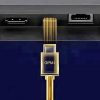













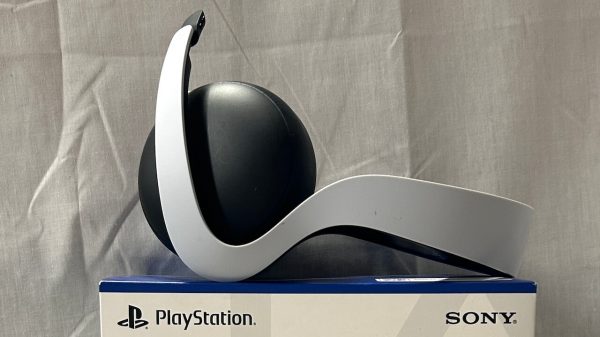
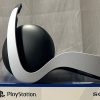

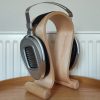



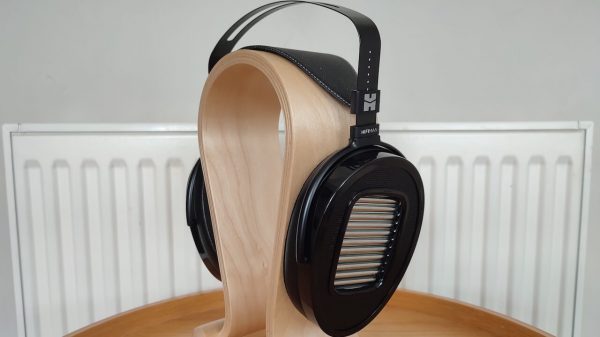














Bob Dog
October 12, 2021 at 5:21 pm
You ask ‘are they heavy’ and then don’t tell us what they weigh.
Is this the headphone review webpage version of the Babylon Bee?
Ian White
October 12, 2021 at 7:17 pm
Bob,
578 grams.
One too many articles last night. Sorry. Will do better.
I enjoy the Babylon Bee.
Ian White
MadMex
November 7, 2021 at 10:14 pm
Love the intro on this headphone review. What is it with high-end headphones? For $3000 one could purchase plenty of top-notch floor standing loudspeakers, Klipsch Heresy’s come to mind. How headphone companies get away with this is beyond me. But these Sendy Peacocks are lookers no doubt.
Ian White
November 7, 2021 at 11:31 pm
MM,
I ask myself that question all the time because I could never justify spending more than $500 on any pair of headphones and I’ve had a chance to listen to most of the $3,000+ products out there.
I think they appeal to a very different customer. The Head-Fi crowd who will spend $3,000 on a pair of Meze Empyrean (and they are fantastic headphones) or $5,000 on a pair of Audeze CRBN or LCD-5s are not the same people buying $20,000+ stereo systems.
I’ve been to enough CanJam and Head-Fi meets to know that the two crowds are very different. Not everyone has the space (outside of N. America especially) for a huge system and headphones are portable. You can take a $5K headphone rig with you and it fits inside your laptop bag or knapsack.
Nobody is schlepping a stereo system with them. Not even to the cottage or beach. Not that I’ve ever seen anyone here on the Shore wearing LCD-5s on the beach.
I think the headphone experience is very different and there is a lot of innovation in the space with start-ups.
Ian White